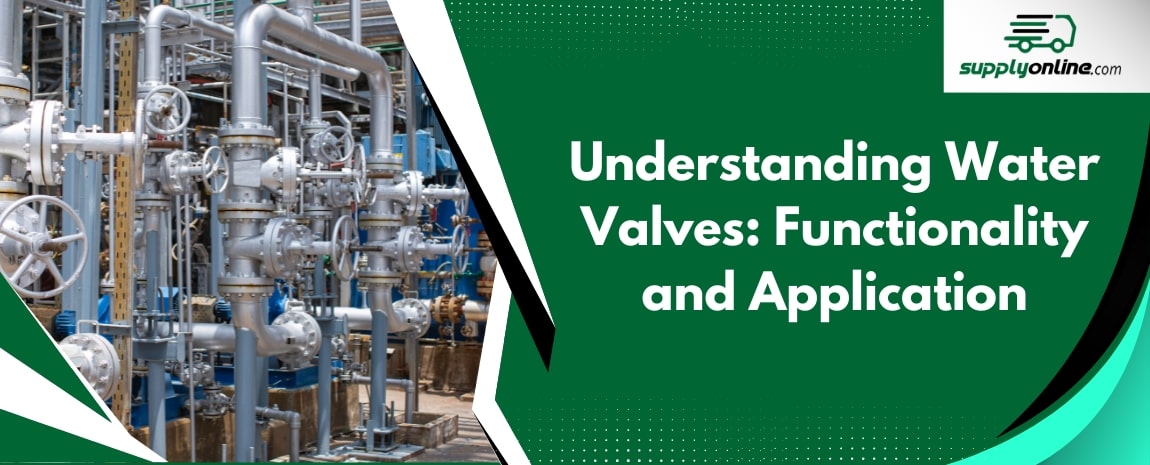Understanding Water Valves: Functionality and Application

Water valves are an essential component of residential, commercial, and industrial plumbing systems. They are mechanical devices that regulate, direct, or control the flow of water by opening, closing, or partially obstructing various passageways. From maintaining water pressure to ensuring precise water flow, the significance of these valves cannot be overstated. In this comprehensive guide, we will be exploring their types, functions, and real-life applications. Whether you are a homeowner looking to understand your plumbing system better, or an industry professional, this article will provide you with essential insights into effectively managing water flow in any setting.
Types of Water Valves and Their Functions
1. Gate Valves


Gate valves control water flow by raising or lowering an internal gate by turning a handle. When the gate is lifted, water flows freely; when lowered, the flow is completely blocked. Due to their ability to offer a secure shut-off, gate valves are commonly used in residential water systems and main supply lines. They are ideal for applications where the valve does not need to be frequently opened and closed.
2. Ball Valves


Ball valves utilize a hollow, perforated sphere and a handle to control water flow. The handle's position (inline or perpendicular) clearly indicates whether the valve is open or closed. Widely used in residential settings for their reliability and ease of operation, they are ideal for main water shut-off points and other applications where a quick, secure closure of the water flow is necessary.
3. Butterfly Valves


Butterfly valves use a rotating disc, the "butterfly," which turns with a handle or gear to either block or allow the flow of fluid. They operate via a simple quarter-turn mechanism. These valves are primarily used in industrial settings for quick shut-off and flow regulation. Their compact design and cost-effectiveness make them suitable for large diameter pipes, especially where space and budget are limited.
4. Globe Valves


Globe valves control flow through a movable disk-type element and a stationary ring seat in a generally spherical body. They are used to regulate flow in a pipeline. These valves are often used in applications requiring throttling and frequent operation, such as in feedwater, chemical feed, and HVAC systems where flow needs to be finely tuned.
5. Check Valves


Check valves allow fluid to flow in only one direction, automatically preventing backflow which could lead to system contamination and damage. They are crucial in preventing reverse flow in systems such as wastewater management, residential sump pumps, and industrial piping where maintaining directional flow integrity is essential to operational safety and efficiency.
6. Faucet Valves


Faucet valves or volume control valves are used to control the flow of water in sinks and bathtubs. They typically operate via a rotating mechanism that adjusts flow and temperature. There are various types of faucet valves specifically designed for controlling flow, including ball valves, cartridge valves, ceramic disc valves, and compression valves. Commonly found in household and commercial sinks, these valves are essential for everyday activities such as washing hands, cleaning dishes, and bathing.
7. Water Shut Off Valves


Water shut off valves allow the user to completely stop the water supply to a particular area of a home or building without affecting the service in other areas. Water shut off valves are critical for emergency situations or when repairs are needed. They are typically located near fixtures, appliances, or as main valves at the property’s water entry point.
8. Float Valves


Float valves use a floating ball connected to a lever that automatically controls the water level in a tank or cistern. These valves are crucial in maintaining water levels in tanks, preventing overflow or enabling automatic refilling, commonly used in toilet cisterns and in industrial cooling systems.
9. Water Pressure Balancing Valves


Water Pressure Balancing Valves reduce incoming water pressure to a safer, more usable level for the home or commercial facility. They protect plumbing systems from damage due to high pressure, reduce water consumption, and improve overall system efficiency. Ideal for both residential and commercial buildings where city water supply enters at high pressure.
Factors to consider while choosing a valve:
- Application: Understand the primary function needed—whether it is shutoff, flow control, pressure reduction, etc.
- Material: Valves are made from various materials such as brass, stainless steel, and PVC. The choice depends on the type of fluid, pressure, temperature, and environmental conditions.
- Size and Type: Ensure the valve size matches the pipe size for efficient operation and installation. Also, select the type based on whether you need throttling, on/off control, non-return, etc.
- Pressure and Temperature Ratings: These should match or exceed the maximum operating conditions expected in the system.
Ready to explore an extensive selection of high-quality water valves?
Whether you are upgrading your home plumbing system or outfitting a large industrial facility, visit Supply Online today to find the perfect solution for your needs. Our expert team is always ready to help you choose the right valve to ensure your water systems function flawlessly and efficiently.

